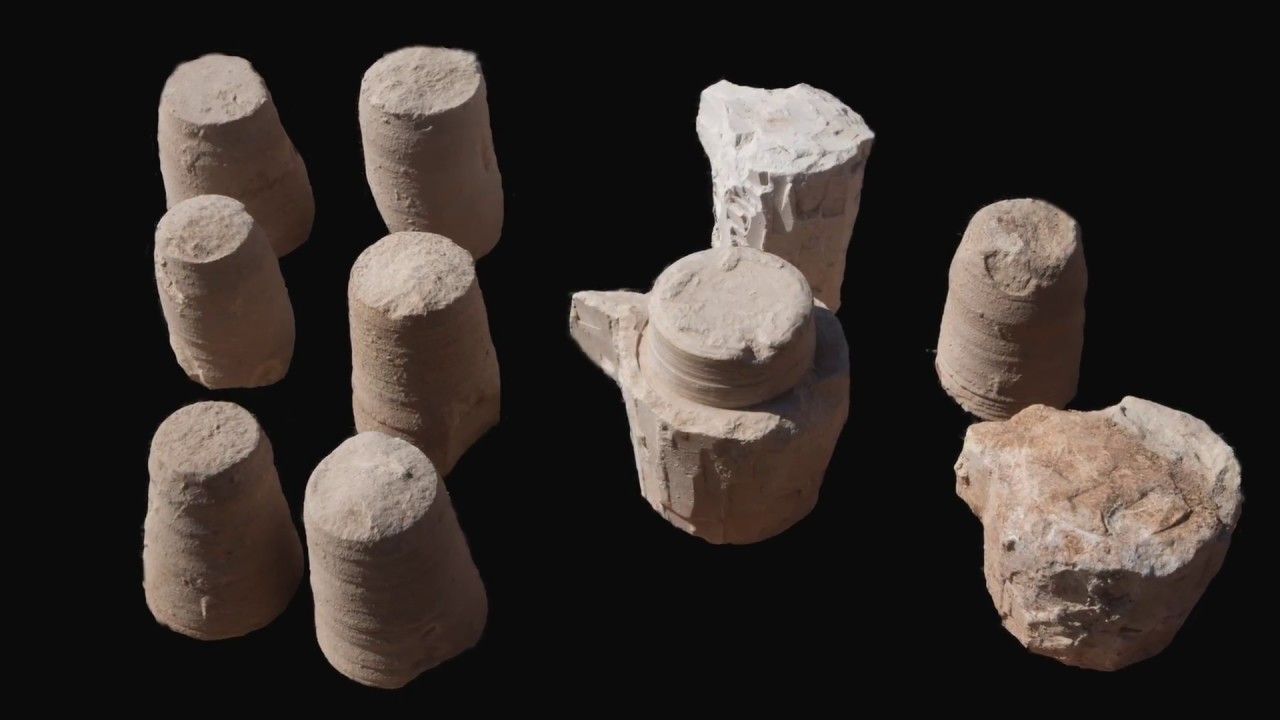Archaeologists discovered an unusual cave is in the town of Reineh (between Nazareth and Kana). It was a stone quarry cave that doubled as a workshop and a first-century factory of tableware. Several stone bowls and cups in various stages of completion were found in the bowels of the cave, suggesting the cave may have been home to an active limestone goods manufacturing. The soft stone surfaces of chalk vessels were covered with chisel marks, showing where the rock had been hewn out. Inside were thousands of chalk cores and other waste from making bowls, drinking mugs and other tableware in various stages of production.
This is the fourth 2000-year-old workshop found in Israel. The first two were found near Jerusalem, the third one just a kilometer from the Reineh site. The archaeologists were surprised to find the two stone workshops, within a kilometer of one another, in Galilee. People around the ancient world generally used pottery to eat on and to store food. Pottery is common. However pious Jews in the late Second Temple Era used stoneware.
The village of Canna in the Gospel of John is the site of Jesus’s first miracle – turning water into wine (John 2). The special jars that Jesus used to turn water into wine were typically used for purity rites.
Now there were set there six waterpots of stone, according to the manner of purification of the Jews, containing twenty or thirty gallons apiece. (Jon 2:6 NASB)

Some Jews in the 1st century BCE and 1st century CE were very focused on matters of ritual purity in their life and worship. These were not ordinary clay jars, but ones carved out of stone (limestone rock). Leviticus 11 teaches that cloth, a wooden or leather vessel if defiled by an impurity, could be purified through a special ritual. Pottery, however, can not be redeemed and must be broken. But there is no mention of stone vessels in connection with defilement. It appears that this omission led some ancient rabbis at to assume that stone simply could not become impure.
“Some scholars would claim Galilee Jews were different from Judean Jews with respect to Judaism, that the Judeans were more religiously observant particularly in respect to the purity laws. Some scholars would claim the Galilee Jews were more lax,” Dr. Adler noted. “In ancient times, there was no such thing as being religious or nonreligious. It didn’t exist. People read the Bible and believed it and led their lives accordingly,” said Adler.

Stone vessels became popular in Judea in the mid-second century BCE and remained in use into the Roman period. The perceived value of such stone vessels is their inability to be contaminated and that is why they were used for purity rituals. Such large-scale production of stone vessels in Galilee for the local market point to the strength of purity observance in Galilee at the time.
“Stone vessels played an integral role in the daily religious lives of Jews during this period. Perhaps because stone wasn’t among the materials mentioned in the Levitic purity codes it was deemed an exception. Either way”, he said in a statement released by the university, “It was a Jewish ‘Stone Age’ of sorts.” “The fact that we have such large-scale production of stone vessels in Galilee for the local market really shows the strength of purity observance in Galilee at the time,” he concluded.
For now, excavations of the cave have only yielded stone mugs and small bowls, nothing of the size mentioned in the Book of John.
Sources: Haaretz and Times of Israel











Member discussion